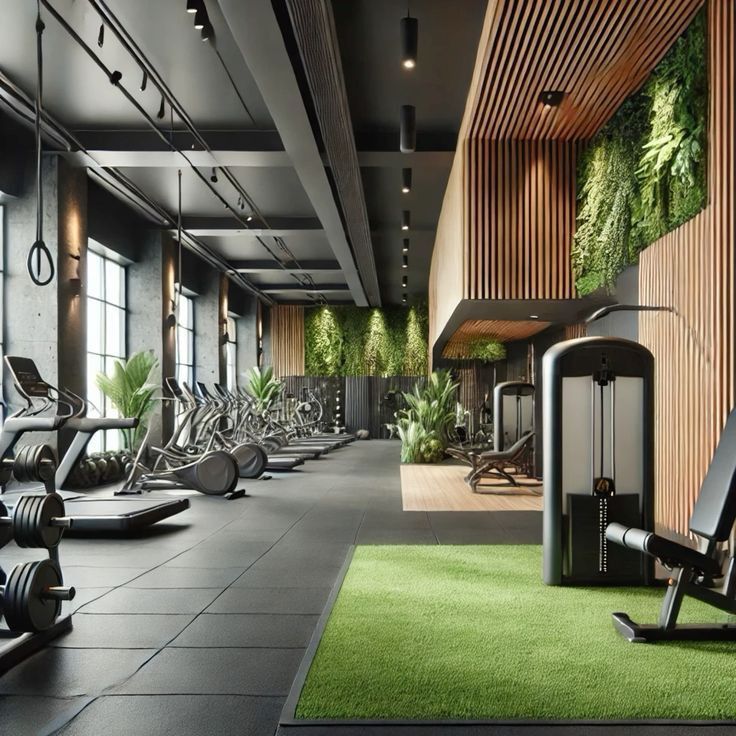How to Choose the Right Flooring for Your Fitness Studio
Choosing the right flooring for your fitness studio isn’t just about aesthetics — it’s about safety, performance, durability, and long-term value. Whether you’re setting up a new gym or upgrading your current space in Dubai or Abu Dhabi, the type of flooring you select can directly impact the comfort and safety of your clients.
In this guide, we’ll walk you through everything you need to consider when selecting fitness studio flooring and help you find the best solution for your unique space.

Why the Right Gym Flooring Matters
Your flooring plays a vital role in:
- Absorbing shock and reducing injury
- Improving grip and traction
- Protecting your subfloor from heavy equipment
- Reducing noise in high-traffic zones
- Enhancing the studio’s look and professionalism
Poor flooring choices can lead to slips, damaged equipment, or even legal liability in some cases.
1. Know Your Workout Zones
Every fitness studio includes different types of training areas:
- Cardio Zones: Treadmills, bikes, rowers — need vibration-dampening floors.
- Weightlifting Zones: Require high-impact, durable flooring like rubber rolls or tiles.
- Functional Training Areas: Need versatile, slip-resistant surfaces.
- Yoga or Pilates Spaces: Comfort and insulation are key — foam tiles or padded mats work well.
Choose the right material for each zone to support the workout type and equipment used.
2. Evaluate Flooring Material Options
Each flooring type has its pros and cons. Here’s a breakdown:
Rubber Flooring (Best Overall Choice)
- High durability and shock absorption
- Anti-slip and noise-reducing
- Ideal for commercial gyms and home studios
- Available in tiles, rolls, and mats
Foam Flooring
- Comfortable and soft
- Best for low-impact training like yoga
- Not suitable for heavy weights
Vinyl Flooring
- Looks stylish and easy to clean
- Water-resistant, great for studio aesthetics
- Not ideal for heavy lifting areas
Artificial Turf
- Great for sled workouts and agility drills
- Shock-absorbent and visually appealing
- Needs good drainage if installed outdoors
3. Consider Your Budget and Lifespan
Don’t just go for the cheapest option — think long term.
- Rubber rolls are cost-effective and last for years with heavy use.
- Tiles allow easy replacement and flexible installation.
- Foam options are affordable but need more frequent replacement.
4. Think About Maintenance
Gyms are high-traffic areas. Your flooring should be:
- Easy to clean
- Mold-resistant
- Non-porous to avoid sweat absorption
Rubber and vinyl flooring rank highest in maintenance friendliness.
5. Choose a Trusted Local Supplier
When you’re selecting gym flooring in the UAE, it’s important to work with experienced professionals who understand:
- Local climate conditions
- Custom sizing and layout needs
- Fast installation with minimal downtime
For premium-quality, long-lasting fitness flooring, visit Gym Flooring Dubai — Dubai’s most trusted supplier for rubber flooring, turf, mats, and interlocking tiles tailored to your studio’s needs.

Final Tips Before You Buy
- Ask for samples before placing a large order.
- Ensure proper floor prep (like leveling or moisture barriers).
- Choose eco-friendly and fire-rated options if needed.
- Verify warranty and replacement policies.
Conclusion: The Right Floor Sets the Tone
Investing in the right flooring is essential for creating a safe, high-performance space where your clients feel confident and supported. Whether you run a small yoga studio or a full-scale commercial gym, the right floor makes all the difference.
